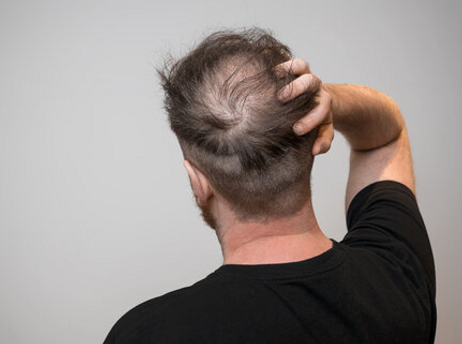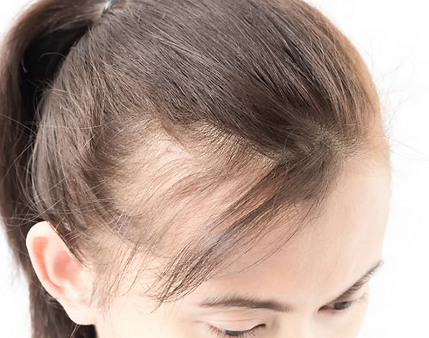.jpg)
Understanding the Causes of Hair Loss
Hair loss is a common concern, with most people shedding 50–100 hairs a day — usually unnoticed because new growth replaces the loss. Hair loss becomes noticeable when new hair fails to grow back. Multiple factors can contribute to this process, from genetics to lifestyle habits.

Main Causes of Hair Loss
Family History (Heredity)
The most common cause, known as androgenic alopecia. This occurs gradually and in predictable patterns; with men, the receding hairline, bald spots and for women, thinning along the crown. This often begins as part of the natural aging process.
Hormonal Changes and Medical Conditions
Hormonal changes are a common cause of hair loss, especially during major life stages such as pregnancy, childbirth, and menopause. Thyroid imbalances can also disrupt the hair growth cycle, leading to noticeable shedding. In addition, certain medical conditions may affect hair health. Alopecia areata, an autoimmune disorder, causes the body’s immune system to attack hair follicles, resulting in patchy hair loss. Scalp infections such as ringworm can lead to localized shedding, while trichotillomania — a hair-pulling disorder — can cause breakage and thinning in specific areas. Depending on the underlying cause, this type of hair loss can be either temporary or permanent.


Medications and supplements
This may contribute to hair loss as a side effect. Drugs used to treat cancer, arthritis, depression, heart problems, gout, and high blood pressure are among the most common causes. In these cases, hair often begins to regrow once the medication is discontinued, but recovery can take time.
Radiation Therapy
It can cause significant hair loss, and in some cases, the hair may not grow back exactly as it was before treatment. Changes in texture, thickness, or coverage are not uncommon after radiation exposure.
Stress and Shock Events
This can lead to temporary hair loss several months after the incident. This type of shedding, often called telogen effluvium, can occur after major surgery, a serious illness, or an emotionally distressing experience. While the hair usually grows back over time, it can be unsettling while it lasts.
Hairstyles and Hair Treatments
This can also damage the hair and scalp. Tight styles such as pigtails, braids, or cornrows can cause traction alopecia, a form of hair loss caused by repeated pulling on the hair. Frequent use of hot oil treatments, chemical relaxers, or perms can weaken hair structure and damage follicles. If scarring occurs, this type of hair loss may be permanent.
Understanding the root cause of hair loss is the first step toward finding the right treatment or prevention plan. Whether the reason is hereditary, medical, or related to styling habits, identifying it early can help you protect your hair and scalp health.
